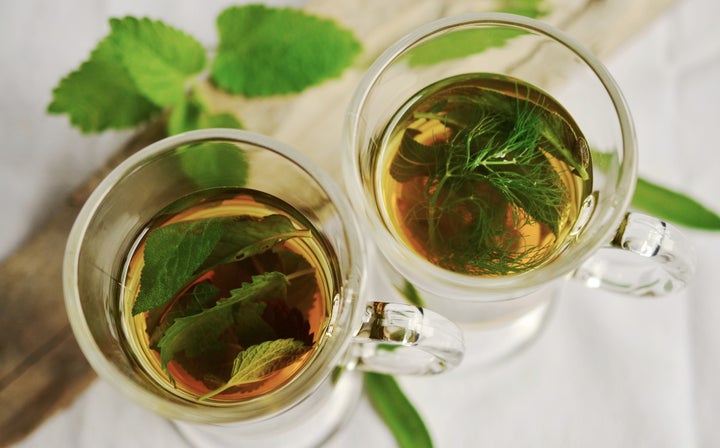
Old is new and new is old in today’s culture, including the age-old cup of hot tea. With elegant cafes like The Steeping Room and The Tea Spot offering a variety of herbal and floral brews, tea houses across the nation are gaining popularity. According to the Tea Council of the USA, hot tea sales have increased by over 17 percent among North Americans over the last five years. While many North American prefer cold brew tea, hot tea is the world’s second most popular beverage. For those preparing for their first tea or wanting to unwind in the tranquility of their local tea house, here’s your go-to guide for National Hot Tea Month.
Brewing Tea
On a chilly morning, grabbing a cup of brewed tea with friends warms us up and lets us share the simple pleasure of a hot cuppa. If you’re one of many who find the taste of tea bland or boring, this could be because the tea bag you found on the shelf had long since expired. The wonders of the tea bag is speed and convenience, but loose leaf tea offers a richer and fuller flavor. If your concern is cost, there are plenty of loose leaf tea available per ounce cheaper than the bags sold on local shelves.
For those looking to expand the palate, try brewing loose leaf tea. Across China, the most common brewing method is putting a couple pinches of tea leaves in a glass and filling it with with hot water. After letting it steep for a minute, use your lips to filter the tea leaves as you sip.
Another Chinese brewing method is gaiwan (guywan, romanization). It consist of a lid, a cup, and a saucer made from glass, porcelain or clay, and makes the perfect single serving of tea.
Tea Services
The most common question about tea service is the differences between styles. Invitations to tea conjure images of cucumber sandwiches and pinkies up, but the menu may include anything from scones to champagne.
Full Tea: is a four course option that includes all afternoon tea accompaniments, savory, scones, sweets and tea.
- Savory finger sandwiches
- Scones
- Sweets, desserts
- Choice of tea.
Royal Tea: is often reserved for special occasions noting the addition of champagne to afternoon tea menu.
- Full Tea menu
- Stem of champagne or sherry
Often High Tea or “Meat Tea” is misused when referring to afternoon tea. This tea was originally served as the main meal of the day in the 19th century. This basic meal consists of meat pies, sausages, Welsh rarebit, relishes, breads, cheeses, jam, butter, fruits, desserts and tea. It may be served family style, or as a buffet supper. Alcohol may be served. Many European countries still enjoy this tradition as a hearty meal served family style.
Helpful guidelines for preparing, serving and drinking tea:
- Use bottles of filtered water to avoid mineral after taste, and enjoy the richness of the tea.
- Measure rounded teaspoons of tea for each cup of water the teapot holds. Add an extra teaspoon if stronger tea is preferred.
- Bring water to a boil and pour over tea leaves. Cover the teapot to allow the leaves to steep.
- Set a timer.
- Steeping time depends on the leaf size. Large leaves require more time; small leaves less time.
- Steep Black tea 3 minutes - rarely more than 6 minutes. Steep Formosa Oolong 7 minutes. Steep Green tea 1 minute.
- Sugar or lemon? Sugar first so the lemon’s citric acid does not prevent sugar from dissolving.
- Milk and lemon are not enjoyed in the same cup of tea because lemon’s citric acid will curdle the milk.
- Pour milk in after the tea has been poured. If you pour the milk first, the tea may be too weak.
- Use the handle of the teacup to hold it. Avoid cradling the cup - unless it has no handle.
- Contrary to popular belief, extending the pinky while drinking tea is a faux pas.
- The spoon rests on the saucer to the side of the cup – not in the cup of tea.
Going out to tea is one of life’s true pleasures! We hope this has given you the basics so that you will enjoy your next tea with confidence. Please share this post or ask a question below in the comments section.
Sharon Schweitzer, J.D., is a cross-cultural trainer, an international protocol expert and the founder of Protocol & Etiquette Worldwide. In addition to her accreditation in intercultural management with the HOFSTEDE center, she serves as a Chinese Ceremonial and Banquet Dining Etiquette Specialist in the documentary series Confucius was a Foodie, on Nat Geo People and NTD Television Canada. She is the resident etiquette expert for popular morning lifestyle shows: ABC Tampa Bay’s Morning Blend and CBS Austin’s We Are Austin. She is regularly quoted by BBC Capital, Investor’s Business Daily, Fortune, National Business Journal, Reader’s Digest and Stylecaster. Her international award-winning, best-selling book Access to Asia: Your Multicultural Business Guide, now in its second printing, was named to Kirkus Reviews’ Best Books of 2015. Sharon is the winner of the British Airways International Trade, Investment & Expansion Award at the 2016 Greater Austin Business Awards.
